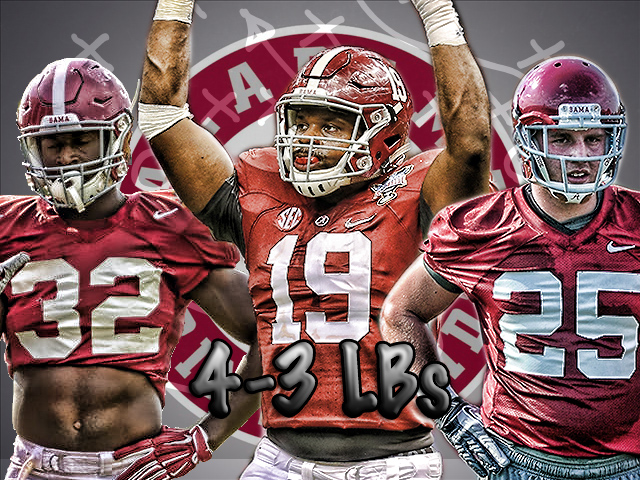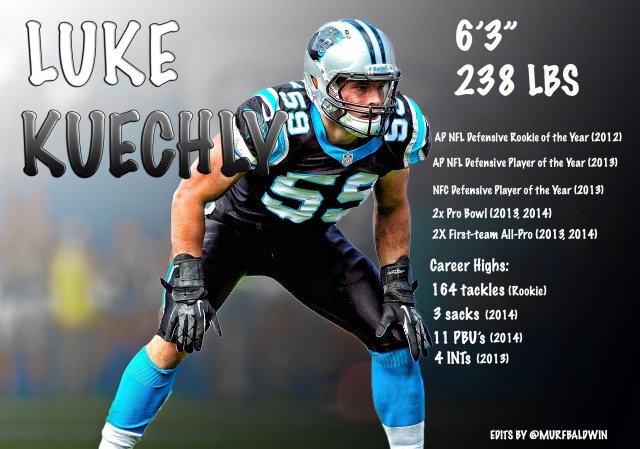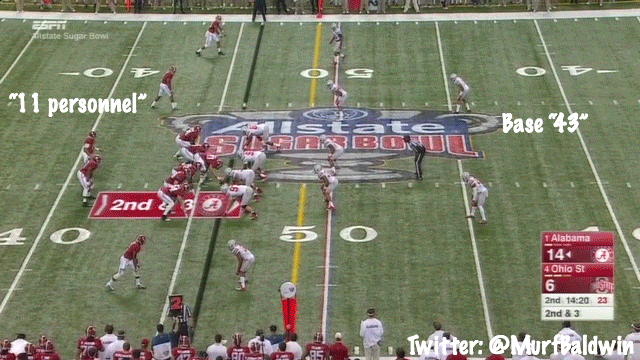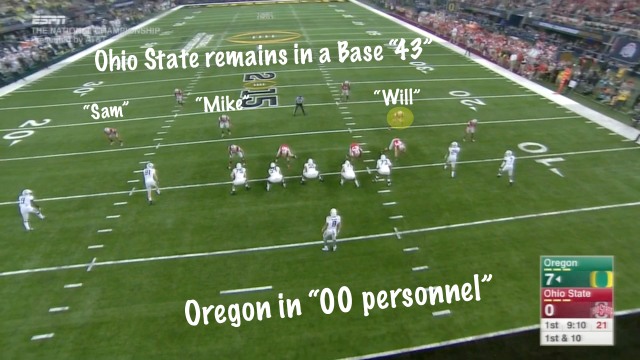Rashaan Evans, Dillon Lee could inject athleticism into Tide LBs
As we move past the exciting times of National Signing Day and into spring football coverage, it’s always good to retrospectively look at what aspect(s) may have held a particular program back from achieving the ultimate goal every team works for.
And by doing so we can make an honest assessment of what that squad may need to do for future purposes.
For the University of Alabama, the 2014-15 season should be viewed as one of the all-time best coaching jobs of head coach Nick Saban’s illustrious career, given the circumstances.
Critics and pundits undoubtedly have memory loss as most expected the Tide to struggle replacing the leadership of long-time starting quarterback A.J. McCarron (Cincinnati Bengals) along with the best defensive player, perhaps, in the history of the program, off-the-ball linebacker C.J. Mosley (Baltimore Ravens).
All the Tide coaching staff did was lead a relatively green team to a 12-1 regular season where it captured yet another Southeastern Conference title and a spot in the inaugural four-team playoff.
And while it ultimately wasn’t to be, with the Tide coming out on the wrong end of a heartbreaking tilt against the eventual national champion Ohio State Buckeyes, we were able to get an up-close look at a style of defense, and one particular player, that is tough for any team to deal with.
OSU showed us that it’s capable to play the majority of the time in your base defense while being dominant against both the run and the pass.
And we could chalk it up — in part — to one particular player.
OSU’s Darron Lee
The ability to operate in your base defense usually derives from one sub-group: the off-the-ball LBs.
Sure, in later down-and-distance situations you’d like to have your best pass-rushers in the game, but it’s usually the second-level defenders who are often substituted for in the latter part of a series.
As it pertains to Alabama’s 3-4-based scheme, usually it’s the strong- and weak-side linebacker who are replaced by a corner or safety. By doing this, Bama ensures it matches up favorably against “10” and “11 personnel,” or any personnel groupings with several downfield targets.
But what happens when a team has versatility within its scheme by having a couple of “Y” targets who can split out wide or lineup in the backfield and block? Can you trust a 6’0″, 180-pound defensive back to compete with a tight end or stack-and-shed a block to make a tackle in the run game out in space?
Probably not.
But that’s where the coverage linebacker comes into play: a more lengthy player who is naturally sound in the run game but can also play in reverse; this player is usually referred to as a “tweener” at the next level but could almost be considered an over-sized safety at the collegiate level.
Ohio State’s 6’2″, 225-pound hybrid ‘backer Darron Lee most exemplifies this type of player at the collegiate level, while players like Luke Kuechly (Carolina Panthers, 6’3″, 238 lbs) and Kiko Alonso (Buffalo Bills, 6’3″, 238 lbs) are the prototype in the NFL.
Carolina Panthers’ LB Luke Kuechly is the most complete LB in football.
I’ve always been a big proponent in area coverage — on the second level — with LBs opposed to DBs as length and tackling ability are heightened in these situations.
A player like Lee proved his worth by being able to cover a tricky route-runner like Bama’s Amari Cooper, while being stout against the run (seven solo tackles) and a complete nuisance in the manufactured-pressure game (two sacks).
Notice how Lee is lined up across from college football’s most dangerous receiver in Amari Cooper? Even though most defensive units would counter with a sub package, due to the offense’s deployment of “11 personnel,” OSU stayed in its base “43.”
Usually that play would have gone for a decent gain as some nickel corner wouldn’t have possessed the tackling prowess to corral Cooper in space.
Coverage LBs excel at it.
– – – – – – – – – – – – – – – –
Going into this season, it feels as though it’s all but a foregone conclusion that rising junior Reuben “Torpedo” Foster would step into the role of the departing Trey DePriest at weak-side inside linebacker.
While DePriest certainly had some positive aspects about his game, none of them had anything to do with athleticism, which I feel held the Tide back, at times. However, DePriest was a heady player who knew the scheme inside and out, he just had trouble making plays against high-powered offenses.
Foster, on the other hand, is more athletic than DePriest while being just as physical. But he’s the classic run-and-hit linebacker who may struggle in coverage, not mention he’s only 6’1″.
Luckily, Alabama has the best linebacker in the country in Reggie Ragland — who I wholeheartedly believe has no weaknesses. He’s very much in the mold of former superstar C.J. Mosley — who just turned in one of the finest rookie performances I’ve seen with the Baltimore Ravens.
In a 4-3-based defense, Ragland is capable of playing all three spots, but for all intents and purposes he’d fit best at “Mike.” I would have very little problem with Foster at the weakside spot where he’d be freed up to make tackles and have very little contact with tight ends.
However, I’m not sold on Foster being the only option if Alabama were to mimic the Ohio State way of operating on defense.
Here we see Ohio State in the championship game against the most explosive offense in college football, the University of Oregon. Despite Oregon’s frequent use of multiple-receiver sets, Ohio State felt confident enough in its off-the-ball LBs to remain in base the majority of the tilt.
Alabama can certainly replicate this scheme.
Rashaan Evans
The 6’3″, 225-pound Rashaan Evans may be the most athletic player of the Saban era. The former 5-star prospect runs a reported 4.51 40-yard dash and is often deployed as a hand-in-the-dirt pass-rusher on down-and-distance situations.
However, if Evans were to be played at the “Will” ‘backer in an even-front scheme, we very well could be witnessing a superstar in the making.
Evans is a physical tackler, much like Foster, and he tackles well in space — as witnessed by his time spent on kick coverage during his freshman year. But his agility would lend itself to him being able to stay on the field and cover receivers.
And at 225 pounds, he can’t be expected to set the edge in the run game and would be a complete liability on early run downs. But as an off-the-ball LB he’d be free to use his gifts to make splash plays like OSU’s Lee.
“Rashaan is a freak and when you’re a freak, you deserve to be on the field,” Ragland said (per Marq Burnett of the Ledger-Enquirer). “He’s putting that time in to be that player that Coach Saban and Coach (Kirby) Smart want him to be.”
Not having a freak like Evans on the field at all times is counterproductive, especially in the hurry-up no-huddle age.
Unleash this beast, Coach Saban.
Dillon Lee/Adonis Thomas
I was fortunate to be able to watch both Dillon Lee and Adonis Thomas in high school as both are from my hometown of Gwinnett County, Ga., which has become a bit of a football hotbed in the last decade or so.
Lee came from powerhouse Buford High School where he played the strong-side outside linebacker on a team laden with legit college prospects. It was there where he showed his ability to play in reverse, often sticking to tight ends like glue, and he showed his propensity for getting after the QB as an edge-player.
So far at Bama, the 6’4″, 243-pound Lee has found himself in a reserve role at a myriad of positions. If Bama does go more with an even-front alignment, Lee is the prototypical “Sam” linebacker — which is attributed to his length and versatility — who can stay on the field no matter the circumstance.
Thomas, hailing from Central Gwinnett High School, is built from the same cloth as OSU’s Lee as he’s about as explosive as it gets. At 6’4″, 230 pounds, he also has the length to be extremely effective in zone drops as well as man-to-man coverage on “Y” targets.
Thomas also possesses exceptional closing speed and arrives with some thunder upon impact. He’s not as physical as a Foster or Evans, but his fluidity will make him an NFL prospect at the “Sam” position.
However, it’s his speed that will take Bama’s defensive athleticism to the next level. With all due respect to Foster and the promising Shaun Dion Hamilton — the latter of which should step into the middle when Ragland is gone — lengthy athletes are the way to go for the Tide.
Besides, can you imagine an off-the-ball LB corps with Lee or Thomas (“Sam”), Ragland (“Mike”) and Evans (“Will”)?
That’s some scary athleticism, people.
The Seattle Seahawks have set the standard for defense by being able to stay within their base concepts — mostly due to the presence of versatile LBs Bobby Wagner, K.J. Wright and Bruce Irvin — Ohio State replicated it on the collegiate level.
Alabama has the personnel to take it to the next level…
Who would comprise your ideal 4-3-based linebacker corps for the Tide?





